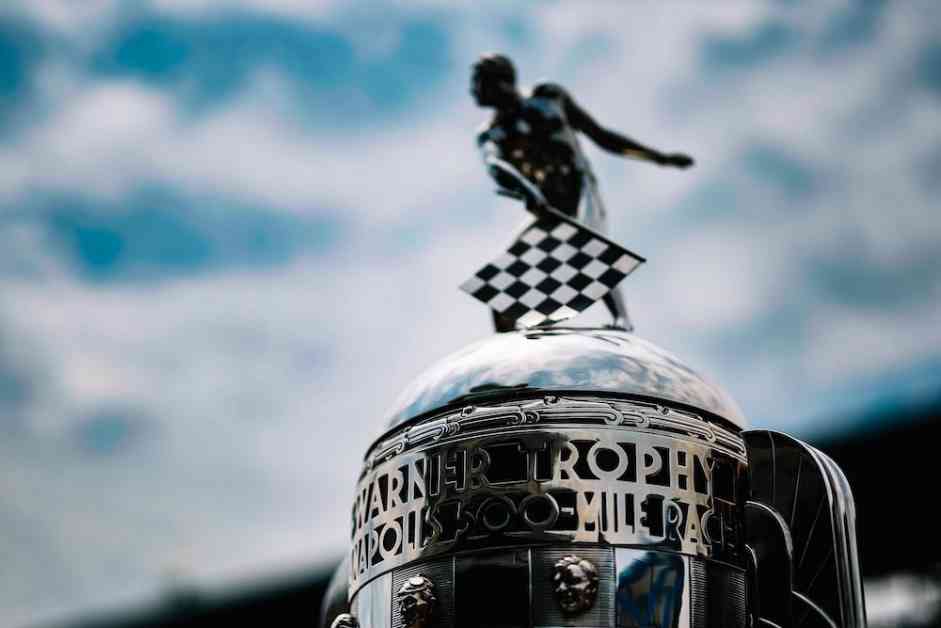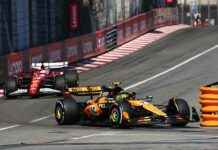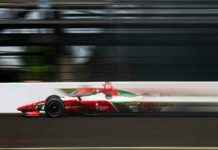Racing stat wizard Scott Richards has been dishing out some juicy Indy 500 stats for RACER readers to feast on lately. And as the 109th edition of the race creeps closer, he’s whipped up a hefty list of historical data points to help us all appreciate the accomplishments scattered across the field of 33 drivers.
Field Breakdown:
– The field is stacked with 30 veterans boasting a total of 253 previous starts, making it the most experienced group since 1992.
– We’ve got three rookies in the mix, a rare sight that only occurred in 1973 and 1990 before. It’s also the fewest rookies since last year.
– The pole speed this year clocks in at 232.79 mph, a 1.43 mph dip from 2024, marking the first year-to-year drop in speed since 2018.
– The field’s average speed sits at 231.063 mph (excluding the three cars that failed to requalify), showing a decrease of 0.885 mph from last year and 0.997 mph from 2023.
– It’s been a minute since we’ve seen back-to-back 500s with a drop in average field speed, the last time being in 2006-08.
– Chevrolet snagged the pole for the 14th time, tying Miller and Honda for the second-most poles in history.
– Chevrolet leads the pack with 18 cars on the grid, their highest count since 2002 (26).
– On the other side, Honda has 15 cars lining up, their lowest number since 2012.
– The age gap between the oldest starter, Helio Castroneves, and the youngest, Nolan Siegel, is the biggest since 2008 at 10,775 days or roughly 29 years and 5 months.
– Each of the first four rows features one former winner, a first in race history.
– Rows 8-11 are packed with four former winners, matching the most seen in 1992 and 2020.
Front Row Fun:
– The front row this year sees drivers born in Israel, Japan, and Mexico for the first time ever.
– It’s also the first time a rookie and a former winner share the front row since 1997 when Arie Luyendyk and Vincenzo Sospiri took the spotlight.
– Never before have we seen a rookie and a former winner lock in the top two starting spots like Robert Shwartzman and his teammate.
Shwartzman Storms the Pole:
– Shwartzman becomes the first rookie to grab the pole since Teo Fabi in 1983 and the first to do so since Tony Stewart in 1996.
– At 25 years and 8 months, Shwartzman is the youngest polesitter since Bruno Junqueira in 2002.
– He’s only the third driver to snatch the 500 pole in their first IndyCar oval start, following Jean Chassagne in 1914 and Walt Faulkner in 1950.
– PREMA makes history as the first team to clinch the 500 pole in their debut attempt since 1984 with Mayer Motor Racing and Tom Sneva.
– Keeping his fingers crossed to be the third rookie to nab Rookie of the Year driving a car numbered 83, following Donnie Allison in 1970 and Bill Puterbaugh in 1975.
Sato’s Second-Place Stint:
– Sato claims his third start in the first two rows, a good omen considering he won the race in his previous top-two starts in 2017 and 2020.
– At 48 years and 4 months, Sato is the oldest driver to grace the front row since 1993, trailing behind Mario Andretti, who started second at 53 years and 3 months old.
– It’s a landmark start for Rahal Letterman Lanigan Racing, marking their best 500 start since Buddy Rice clinched the pole in 2004.
– This is also the highest qualifying result for an Indy 500-only entry since Carlos Munoz’s second-place start in 2013, a position that has seen 11 winners emerge, albeit only once since 1970.
O’Ward’s Third-Place Triumph:
– O’Ward joins the likes of Scott Dixon as the only drivers to qualify in the first five rows in each of their first six 500s.
– He and Dixon share the distinction of making it inside the first five rows in their initial five 500s but only earning their first front-row start in their sixth attempt.
– Much like Ryan Hunter-Reay in 2016, O’Ward secures a front-row spot after previously failing to qualify for the 500 in his career.
Dixon’s Solid Fourth-Place Slot:
– Dixon racks up his 14th start in the first two rows, putting him just behind Mario Andretti (20) and AJ Foyt (16) in the all-time standings.
– This marks the best starting position for a driver with at least 20 previous 500 starts since Mario Andretti snagged second with 28 prior races under his belt in 1993.
Meyer Shank’s Rise with Rosenqvist:
– Felix Rosenqvist’s fifth-place start is a milestone for Meyer Shank Racing, surpassing their previous best of eighth with Helio Castroneves in 2021.
Palou’s Punch at Sixth:
– Alex Palou’s sixth-place starting position boasts an average start of 6.0 in his first six 500s, the best since Dan Wheldon’s 5.7 from 2003 to 2008.
– However, the sixth spot has only produced one winner since 1960, Dan Wheldon in 2011.
Malukas’s Lucky Number Seven:
– David Malukas’s seventh-place start could be a good omen as the last driver to win from this position was his team owner, AJ Foyt, back in 1961.
– AJ Foyt Enterprises also has a three-year streak of qualifying a car in the first three rows, their longest run since 1997-2001.
Lundgaard’s Eighth-Row Feat:
– Christian Lundgaard joins a rare breed of drivers who started 28th or worse in three consecutive 500s before jumping higher in their next start, a group that includes Davy Jones (second in 1996) and George Bailey (sixth in 1939).
Ericsson’s Surprising Ninth-Place Jump:
– Marcus Ericsson boasts a massive leap in his 500 starting position, improving by 23 spots from 32nd to ninth this year.
Daly’s Solid 11th-Place Start:
– Conor Daly secures his best 500 starting spot for Juncos Hollinger, surpassing his previous best of 17th with Kyle Kaiser in 2018.
Ed Carpenter Racing’s Mixed Bag:
– It’s been a tough year for Ed Carpenter Racing, failing to qualify a car inside the top 10 for the first time since their debut in 2012.
Ferrucci’s Unbroken Streak at 15th:
– Santino Ferrucci is eyeing a unique record as the first driver to complete every lap in his first seven 500 starts.
Robb’s Steady Rise to 17th:
– Sting Ray Robb joins a select group of drivers who have improved their starting position by at least six spots in each of their first three 500s, sharing the honor with Will Power and Stan Wattles.
Larson’s Low 19th-Place Start:
– Kyle Larson’s 19th-place start marks the lowest starting position for a driver attempting the Indy/Charlotte double since Tony Stewart in 1999, who started 24th.
Rows 8-11: A Mixed Bag of Experience
– Rows 8-11 bring together a wealth of experience, with a combined 128 previous 500 starts among the 12 drivers, the highest count for the final four rows in 500 history.
The Final Stretch:
– The final row, Row 11, features a mix of former winners and experienced drivers, making it one of the most seasoned lineups in race history with a total of 35 previous 500 starts among the three drivers.
In the end, the Indy 500 promises a thrilling showdown with a diverse mix of rookies, veterans, former winners, and rising stars all vying for glory on the iconic track. As the drivers rev up their engines and the green flag drops, the stage is set for another chapter in the storied history of the Greatest Spectacle in Racing.












